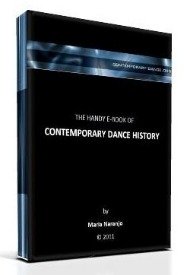How can I start developing a chance dance?
by Jasmine
(England)
Hello,
I am a sixth-form student currently studying A-Level dance. I have taken up an Extended Project where my chosen subject is 20th century influences on modern dance. My final outcome is going to be a performance based on the work of Merce Cunningham and chance procedures.
I aim to develop a dance piece purely through chance and I was wondering if you had any pointers or tips? Perhaps even chance methods ideas?
I would be extremely grateful for any ideas that you could offer!
Thank you
Jasmine
Comments for How can I start developing a chance dance?
|
||
|
||
The handy e-book of CONTEMPORARY DANCE HISTORY:
The Dance Thinker is our occasional E-zine. Fill in the form below to receive it for free and join us.
Read:
"The Dance Thinker"
BACK ISSUES
Post contemporary dance announcements (workshops, auditions, performances, meetings and important news... it is free.)



